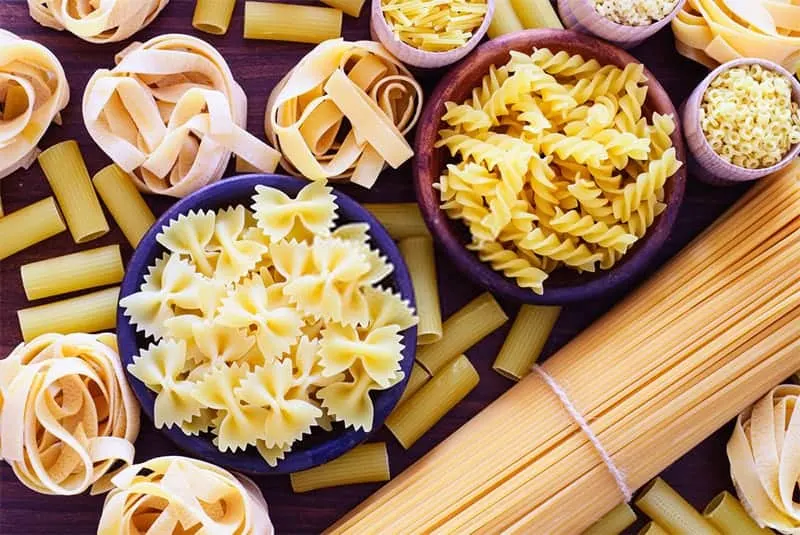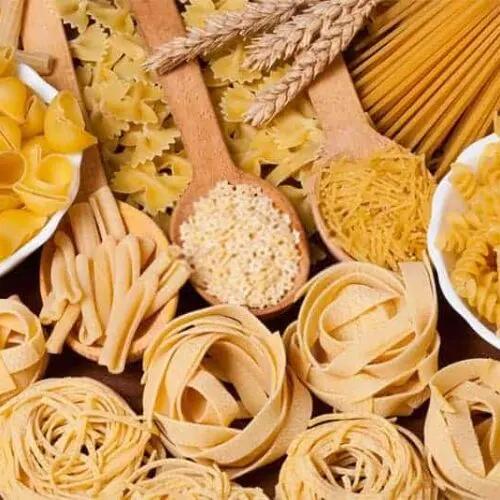It is not unusual to find a container of pasta in the kitchen cupboard, especially if you are a pasta lover.
There is nothing like a bowl of pasta soaked in tomato sauce or other toppings. If you are a regular user of pasta, then you might have asked the question, does paste go bad?
Pasta is a popular Italian food made of wheat flour or other items such as rice flour. You can use pasta with other recipes such as tortillas and oatmeal.
We can group pasta into two broad categories, namely, dried and fresh. Each comes with a specific shelf life.
If you want to know more about pasta, then you should continue reading this article. It aims to provide the shelf life for each type of pasta, and also discusses how to tell if the pasta has gone bad.
Does Pasta Go Bad? How Long Does Pasta Last?

The shelf life of pasta will significantly vary on the kinds of pasta. This section discusses the shelf life of dried pasta, fresh pasta, and cooked pasta.
When it comes to dried pasta, it has an extremely extended shelf life, for it contains zero moisture. As such, the risk of growing mold or bacteria is significantly low.
However, it does not mean that dried pasta is resistant to spoilage, for it will also go bad at some point. On the other hand, fresh and cooked pasta have a shorter shelf life for it has water.
These types of pasta are extremely not suitable for storage under humid temperatures.
The exact determination of shelf life of pasta is quite impossible.
Nevertheless, dried pasta can last up to a year after passing the use-by date. It is worth mentioning that dried paste would lose its original taste if stored for an extended period.
Fresh pasta can either be store-bought or home-made. If it is store-bought, then it can last up to one to two days after the use-by date.
Fresh home-made pasta can last up to three days. Moreover, cooked pasta can retain its quality for around three to four days if stored properly.
If you want to extend the shelf life of pasta, then we recommend storing it in the freezer and follow the label for storage instructions. The following table presents the shelf life of pasta:
| Pasta |
Shelf Life |
|---|---|
| Dried pasta (opened and unopened) |
Use-by + 1 year |
| Fresh pasta (home-made) |
3 days |
| Fresh pasta (store-bought) |
Use-by + 1-2 days |
| Cooked pasta |
4 days |
You should note that the above periods are not a precise estimate; as such, the shelf life of pasta can differ.
How to Tell If Pasta Is Bad? Pasta Shelf Life!

Like any other edible products, the quality of pasta also degrades over time.
When it comes to fresh and cooked pasta, you should look for signs such as mold growth, black specks, and unpleasant smell. If these signs occur, then it means your pasta has gone bad.
The above signs are not common for dried pasta unless some liquid or moisture comes in contact. However, the pantry buys are the main sign that your pasta has gone bad.
You should immediately discard the pasta if you see any bugs.
Moreover, you can determine if the pasta has gone bad by tasting its flavor. Most dried pasta will lose its authentic taste if stored for a longer period.
The following are some signs that indicate unusable pasta:
- One of the most common signs that indicate your pasta has gone bad is the presence of mold. Both uncooked and cooked pasta can develop mold when exposed to moisture or air.
- Another sign to look for is a bad smell. If your pasta has retained an unpleasant smell, then it is a sure sign that it is unusable.
- Change in the colour of the pasta is another sign that indicates unusable pasta.
- Pasta usually loses its original flavor when stored for an extended period.
If the above-listed signs do not appear, then your pasta has not gone bad.
Conclusion

To sum up, the shelf life of pasta differs from one type to another and the condition of storage.
Once cooked, you should store it in an airtight container to avoid contact of moisture or other contaminants.
In comparison, dried pasta can stay longer because it is free of moisture.
But, you should keep in mind that dried pasta tends to decrease its original quality and flavors if stored for a very long time. If you want to increase the shelf life of pasta, then you should store it in a freezer.

Does Pasta Go Bad? How Long Does Pasta Last?
Ingredients
- Pasta
- Air-tight containers or Ziplock bags
- Labels and markers
Instructions
- Read the guide thoroughly to learn how long it lasts.
- Label your container with the content and date and keep track of how much you’re using!
- Make sure to store in an airtight container in a cool, dark place (pantry or fridge).
